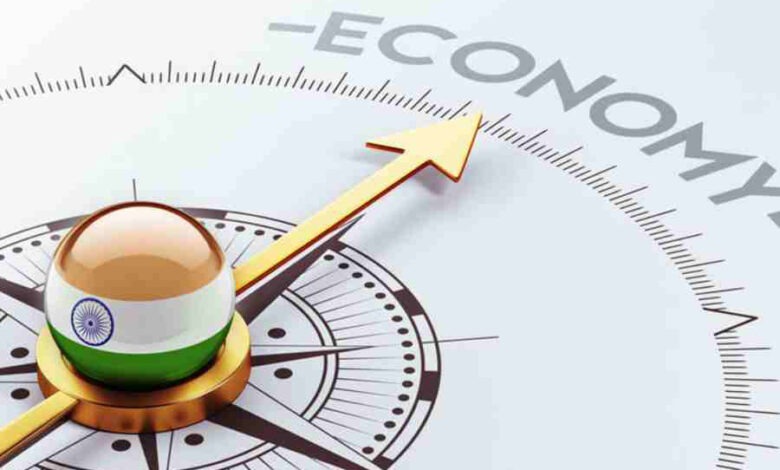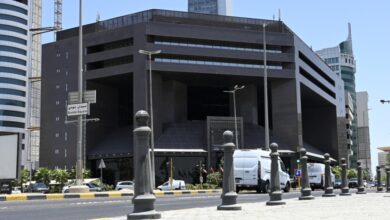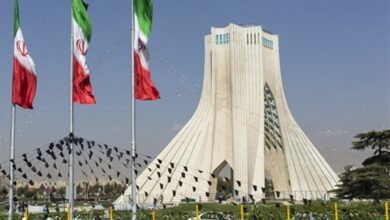Indian Economy, a Beacon Amid a Sluggish Global Economy
“Strong macroeconomic fundamentals, resolute reforms, and strategic policies fuel India’s resilient economic growth.”

The Times Kuwait Report
As India observes its 79th Independence Day this year, it is a matter of pride for all Indians that despite a sluggish global economy and headwinds from the recent trade tariff escalations by the United States, India is marching ahead confidently to claim its place among the top three global economies by the end of 2028. Driving this growth are strong macroeconomic fundamentals, the government’s resolute reforms and strategic policies.
India became the world’s fifth largest global economy in fiscal year 2023-24 (FY24) overtaking the United Kingdom. According to the International Monetary Fund (IMF) India, which is now on par with Japan as the fourth largest economy with a nominal GDP of 4.18 trillion, is poised to surge past Japan In FY26 with its growth rate of 6.2 percent—as opposed to Japan’s growth of 0.6 percent in FY26.
Sustained economic momentum backed by domestic reforms, strategic investments, demographic dividend arising from a large working-age population, and global positioning under the vision of ‘Aatmanirbhar Bharat’ (Self-Reliant India), is expected to drive the Indian economy past the $4.75 trillion mark, to overtake Germany as the third largest global economy by 2028.
No doubt, India with a massive population of over 1.4 billion people has still a long way to go before it reaches anywhere close to the top nations when it comes to GDP per capita. But to the country’s credit it is making steady strides in this direction as wello. According to data from the World Bank, around 270 million Indians moved out of extreme poverty in the decade from 2012 to 2022. This significant reduction is reflected in a sharp drop in the country’s extreme poverty rate from 27.1 percent in 2012 to 5.3 percent by 2022.
The World Bank underlines the need for India to continue prioritizing lowering inequality while also putting growth-oriented policies in place to boost the economy and sustain its relatively high growth rate. Authorities in India are fully aware that reducing inequities and raising per capita GDP is in the economic, social and political interests of the nation.
Local and international economic experts and financial institutions note that realizing the goal of increasing income among the poor is fully realistic and achievable for India, given that the country is expected to continue showing resilient growth over the coming years. The growth projections are supported by increasing domestic demand, ongoing policy reforms, and a healthy investment pipeline, as well as the many new mega projects underway across key sectors.
Considering that India is largely an economy driven by domestic demand—with consumption and investments contributing to a little over 70 percent of economic activity—the government is aiming to raise income levels over the coming years to further spur domestic demand. In line with this commitment to alleviating poverty, the government has initiated several measures and schemes that focus on different aspects of poverty reduction, including creating livelihood opportunities, providing social security, and infrastructure development.
Some of the prominent schemes include empowering women in rural areas by organizing them into self-help groups and providing them with access to financial services, livelihood opportunities, and skill development; providing a minimum of 100 days wage employment to unskilled workers; and training rural youth with skill and providing them with employment opportunities.
Other schemes include delivering assistance to build houses for the rural poor; enabling street vendors and small entrepreneurs to access loans on easy terms; granting social security benefits to the elderly, widows, and disabled individuals; paving all-weather road connectivity to unconnected habitations; making free food grains available to the impoverished; and promoting clean fuel use in cooking by delivering LPG connections.
According to the India Brand Equity Foundation, a knowledge-hub developed by the Indian Ministry of Commerce and Industry, India has today established its credentials as a credible business partner, preferred investment destination, rapidly growing market, provider of quality services and manufactured products; and, stands on the threshold years of unprecedented growth. Moreover, several policy priorities introduced by the government are delivering positive outcomes.
Data from India’s Department for Promotion of Industry and Internal Trade (DPIIT), show the following fiscal and economic outcomes in the country:
- As of July this year, foreign exchange reserves stood at US$700 billion
- Cumulative Foreign Direct Investment (FDI) inflow stood at $1.07 trillion during the first-quarter of this century, establishing India as a major destination for FDI..
- Foreign Institutional Investors (FII) outflows in FY25 were close to $15 billion, while in the same period Domestic Institutional Investors (DII) brought in $70.3 billion
- Robust domestic and international demand drove sharp increases in manufacturing output and new orders, while employment saw a record rise as firms expanded their workforce to meet rising workloads.
- India secured 39th position out of 133 economies in 2024 Global Innovation Index, rising from the 81st spot it occupied a decade earlier. The country also ranks third globally in the number of scientific publications.
- In FY25, the Goods and Services Tax (GST) recorded its highest-ever gross collection at $258 billion, registering a year-on-year growth of 9.4 percent, with average monthly collection during the period standing at $21.6 billion.
- India’s total goods and service exports surged by 76 percent over the past decade, touching $825 billion in FY25, driven by strong performance in engineering goods, electronics, and pharmaceuticals.
- In FY25 commodity exports stood at $433.6 billion, with Engineering Goods accounting for 26.88 percent, followed by Petroleum Products (13.86%) and electronic goods (8.89%) being the top three exported commodities.
- The IT-Business Process Management (BPM) sector in India is a significant contributor to the country’s economy. India’s IT exports are projected to reach $210 billion in FY25, with a 5–6 percent growth anticipated in FY26,
- As of May 2025 there are 122 unicorn startups in India, with a combined valuation of over $363 billion.
- The public cloud services market is expected to reach $17.8 billion by 2027.
- By 2026, widespread cloud utilisation can provide employment opportunities to 14 million people and add $380 billion to India’s GDP.
- The focus on renewable energy sources has achieved a major clean energy milestone in FY25 by generating 50 percent of power from renewable sources, five years ahead of its 2030 target.
In first-half of FY25, India’s growth-focused approach was underscored by the government’s capital expenditure outlay of $176 billion, reinforcing its commitment to infrastructure-led development. Future capital spending of the government in the economy is expected to be supported by factors such as tax buoyancy, the streamlined tax system with low rates, a thorough assessment and rationalisation of the tariff structure, and the digitization of tax filing.
Rising employment and increasing private consumption, supported by rising consumer sentiment, are expected to support GDP growth over the mid-term. However, growth is expected to be marginally impacted if the trade and tariff tussle with the United States remains unresolved. Nevertheless, all signs point to India overcoming headwinds stemming from global and local factors, and surging ahead with its ambitious plans to achieve a developed-country status by 2047, the centenary of its independence.












